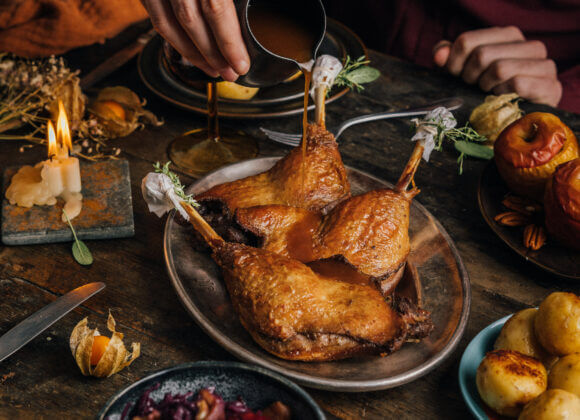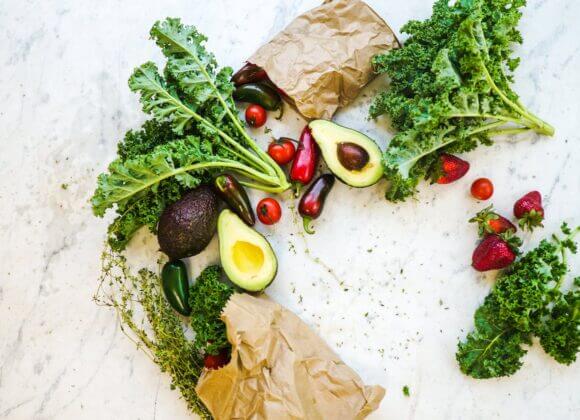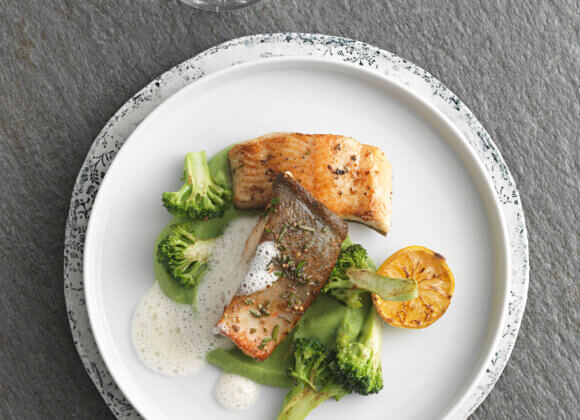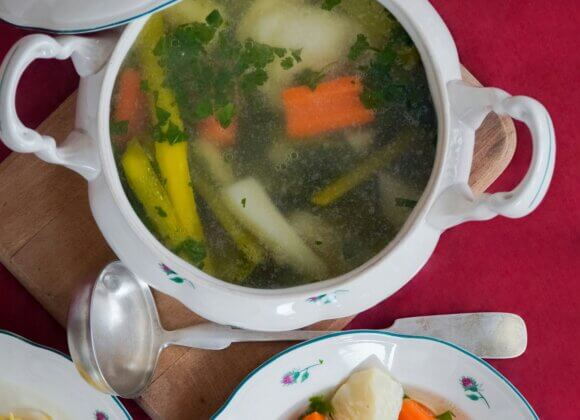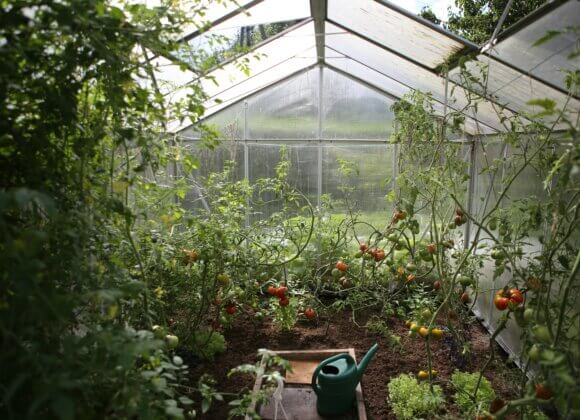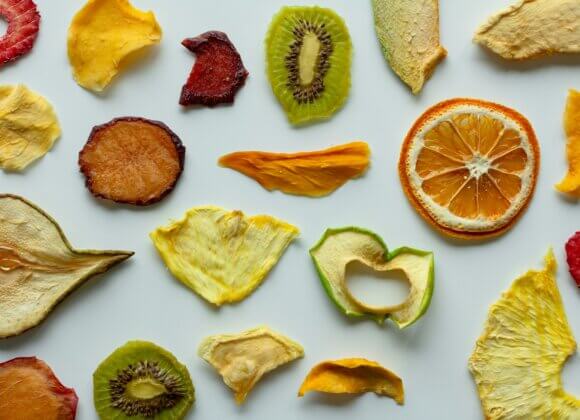In hardly any other country is the topic of home cooking as emotionally charged as in Austria: But it’s not just about classic dishes such as beef roulade, roast pork or pancakes, it’s much more about memories, about childhood, about grandmothers who cooked “by feel” without ever writing anything down.
Held has been running an inn on the Siriuskogel in Bad Ischl since 2008, which has become one of the most popular excursion destinations in the Salzkammergut. Only accessible on foot via a 15-minute hiking trail, guests can enjoy a cuisine that deliberately dispenses with fixed menus. “I want to get away from the menu,” explains Held. “The best thing is when you ask the guest what they want – and that’s what they get.”
This approach is part of the program: around 90 types of herbs and plants grow in their own garden and 70 chickens roam free. There is also game, fish and vegetables from the region. The basis is regional, the implementation boundless.
PS: Am Ende des Beitrags haben sie die Chance, das Kochbuch zu gewinnen! 🙂

“We don’t cook show cooking, we cook memories”
Held consciously sets himself apart from fine dining. “I often go out to eat in high-class restaurants because I enjoy it,” he says. “But it’s the simple dishes that really stick in my memory. The simpler the dish, the more interesting I find it.” For him, it’s not the spectacle that counts, but the moment when taste is combined with emotion.
His philosophy: fewer ingredients, but more depth. “Thank goodness the days are over when you can slap 20 ingredients on a plate. I’d rather have one or two solid basic products – and turn them into something special with a few simple steps.”
Grandma’s poofs – a piece of childhood retold
The dishes from Held’s childhood are a particularly emotional chapter in his cooking. “My grandmother was a landlady, she cooked on the mountain pasture – roasts, stews, pot roast. That was part of our family.” Pofesen in particular are symbolic for him: an old recipe that almost fell into oblivion.
“I changed the cooking process to give them more crunch. The recipe remains the same, but the mouthfeel is different. That stays with me to this day.” Whether as a highlight in the cookbook or at countless guest chef events – Krauli (he owes his nickname to his time as a boy scout, because he could crawl five times faster than anyone else) always has the pofesen with him.
Grammel, Blunzen and asparagus – tradition in new forms
Held shows that home cooking can also be modern, fresh and playful in dishes such as his Grammel ravioli. They combine down-to-earth heartiness with a fine texture. Or the Blunzen tarte flambée with tomato chutney, where a classic product suddenly takes on a Mediterranean lightness. Even sushi techniques find their place, for example in the asparagus maki with beet and elderberry ponzu. The recipes can be found in the appendix.
Held sums it up like this: “I get influences from everywhere – but at the end of the day, I bring every dish back to my home country.”
Home cooking is not always difficult
Many guests still automatically associate home cooking with heartiness. Held firmly disagrees: “No, absolutely not. You can interpret a beef roulade in a totally light and casual way – or in such a way that you won’t be able to get out of your chair afterwards.” For him, food should be enjoyable. “It shouldn’t overwhelm you. My aim is for it to be fun – for those who cook and for those who eat.”
Regionality as the foundation of home cooking
Whether game from the forests, char from the Traunsee, mushrooms from the Gosau or vegetables from the Almtal – Held works closely with producers. For him, regionality not only means quality, but also attitude. “For me, the game season starts when the hunter comes into the kitchen and says: ‘It’s starting again’. Then we process whole animals. That’s regionality – not a New Zealand deer calf from a wholesaler.”
In doing so, he builds on knowledge that has been passed down through generations in the Salzkammergut: Cooking to the rhythm of the seasons, with whatever is growing and available.
Preserving tradition – and retelling it
For Held, home cooking is not a rigid monument, but a living cultural asset. Some recipes remain untouched, others he reinterprets, changes textures, plays with ingredients, combines Austrian cuisine with international influences. “I always say: I cook differently today than I did two years ago – and differently again in two years’ time. We are constantly changing. But some things always stay with me.”
In the end, Held’s aim is to make home cooking visible in all its diversity and topicality. “Home cooking is identity. And identity thrives on being passed on. There is no right or wrong. The only important thing is that the result is enjoyable.”
Home cooking reloaded – 3 recipes to recreate
Grammel ravioli with sage and melted onions
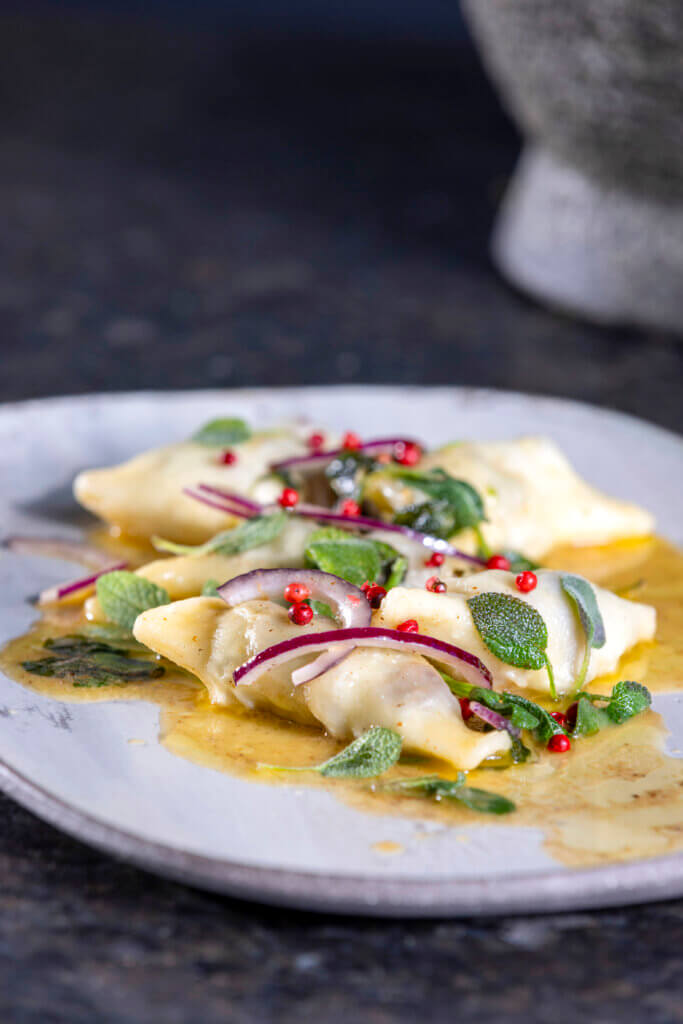
Ingredients
Dough
- 400 g plain flour
- 4 eggs
- 2 tablespoons water
- 1 teaspoon salt (coated)
Filling
- 20 g parsley and/or chives
- 1 garlic clove
- 200 g gherkins
- 1 tsp paprika powder
- Salt, pepper from the mill
- 1 egg
Melted onions
- 2 red onions
- 6 tablespoons butter
- 2 tsp sugar
- Salt
To serve
- Pink berries (Schinus molle)
- Fresh sage
Preparation
For the dough, mix all the ingredients together and knead into a smooth mass.
This works best with a food processor; if you are working by hand, it helps to rub your hands with olive oil beforehand. Leave the dough to rest well chilled for at least 2 hours.
For the filling, finely chop the herbs and garlic and mix with gherkins, paprika powder, salt and pepper. Roll out the dough thinly and cut out circles with a ring (diameter approx. 6-8 cm). Place the grammel filling (approx. 2 tsp) in the middle, brush the edge of the pastry with the beaten egg and fold the disc into a crescent shape, pressing the edge well closed.
Peel and halve the onions and cut into strips. Then place the butter in a pan and melt slowly with the sugar, add the onions and brown slowly. After approx. 8-10 minutes, add 2 tablespoons of water, salt and leave on the stove for another 5-10 minutes over a medium heat.
Cook the ravioli in hot salted water for approx. 3-5 minutes. Then add to the pan with the melted onions and toss well, finish with pink berries and fresh sage.
Blunzen tarte flambée with tomato chutney
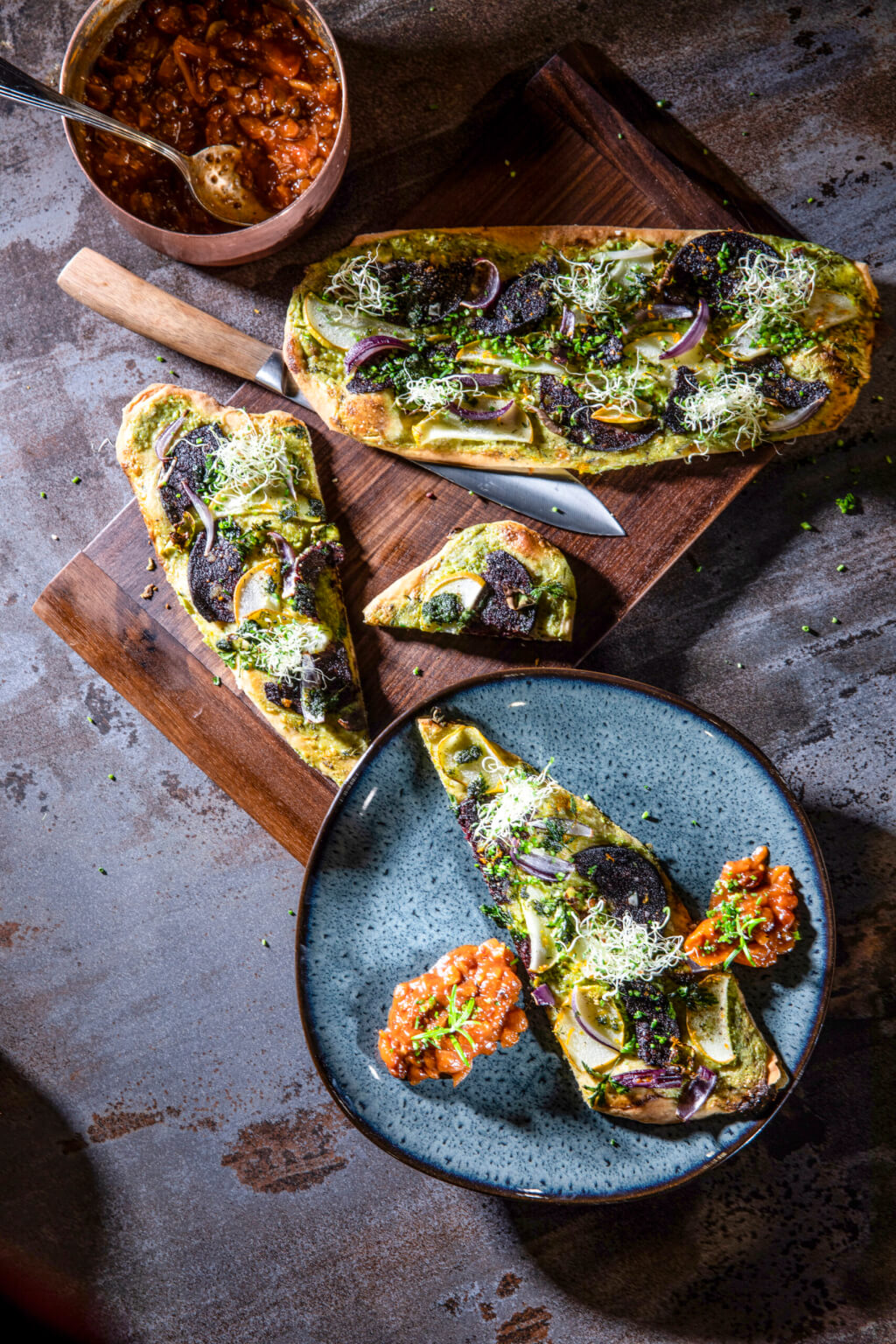
Ingredients
Dough
- 450 g plain flour
- 200 ml water
- 5 tbsp vegetable oil
- 2 egg yolks
- 1 teaspoon salt
Covering
- 200 ml sour cream or crème fraîche
- Juice and zest of 1 organic lemon
- Salt and pepper from the mill
- 2 pears
- 150 g black pudding
- 100 g goat’s cheese
- fresh herbs (thyme, rosemary, parsley or similar)
- 1 red onion
- Pink berries (Schinus molle)
Chutney
- 500 g mixed ripe tomatoes
- 2 medium hot chili peppers
- 1 onion
- 3 garlic cloves
- fresh ginger (the size of 2 cloves of garlic)
- 4 tbsp dried tomatoes
- 50 g cane sugar
- Juice and zest of 1 organic lemon
- 2 tbsp apple cider vinegar
- 1 tbsp mustard
- Salt and pepper from the mill
- 2 tbsp olive oil
Preparation
For the dough, knead all the ingredients together and work into a homogeneous dough. If it turns out a little too runny, simply balance it out again with a little flour. If the opposite happens and the dough becomes a little too crumbly, level it out with a few drops of water. Cover the dough with cling film and leave to rest for at least 30 minutes.
Then roll out the dough very thinly into two large oval flatbreads and place on a baking tray lined with baking paper. Mix the sour cream with the lemon juice, lemon zest, salt and pepper and spread all over the dough. Spread all the other ingredients evenly over the tarte flambée: To do this, cut the pears into small wedges and the black pudding into thin slices, tear or cut the goat’s cheese into small pieces, finely chop the herbs and sprinkle over the tarte flambée. Chop the onion, pour hot water over it and dry it before spreading it on the tarte flambée. This method prevents the onion from burning in the oven.
Sprinkle the finished tarte flambée with the pink berries and bake in an oven preheated to 240 °C for approx. 12 minutes.
To make the chutney, wash and finely dice the fresh tomatoes and chilli peppers. Then peel the onion, garlic and ginger and finely chop them together with the dried tomatoes. Fry the onions and garlic in a pan with a little olive oil, then add the ginger and dried tomatoes and fry for a further 2 minutes until translucent. Then add the chilli peppers and the fresh, chopped tomatoes and all the other ingredients to the pan and simmer over a low heat for approx. 20 minutes. Enjoy the chutney fresh with the tarte flambée.
Tips: A fresh, colorful leaf salad tastes great with this tarte flambée. The chutney will keep for several weeks if bottled in jars and kept refrigerated.
Asparagus maki with beet and elderberry ponzu
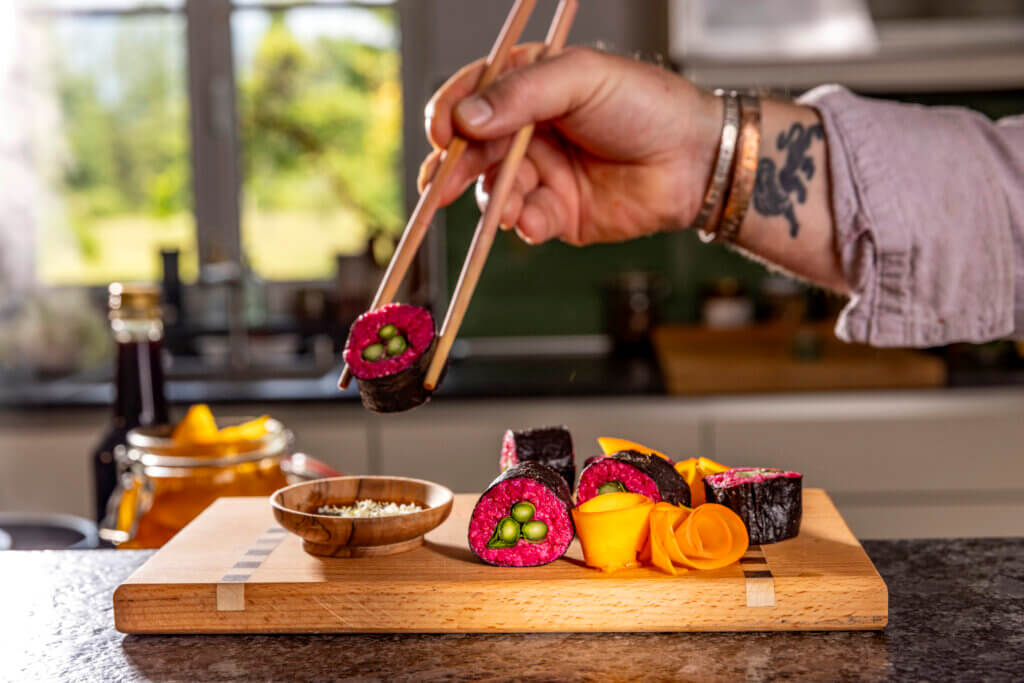
Ingredients
- 450 g sushi rice
- 500 ml water
- 4 tbsp rice vinegar
- 2 tablespoons cane sugar
- 1 teaspoon salt
- 1 tbsp soy sauce
- 7 tbsp beetroot juice
- 4 nori leaves
- 1 sushi mat
- 50 g fresh baby spinach
- 140 g green asparagus (approx. 12 spears)
- 100 ml ponzu sauce (see cookbook)
- 5 elderflowers
- pickled ginger
Preparation
Wash the sushi rice thoroughly several times with cold water and then bring to the boil with 500 ml cold water. As soon as it comes to a gentle simmer, cover and cook over a low heat for 15 minutes, then turn off the heat, cover and leave to swell. Allow the rice to cool well.
Mix together the rice vinegar, sugar, salt, soy sauce and beetroot juice and fold well into the rice with a spoon so that the pink color and the spices are well combined.
To make the maki rolls, place a nori sheet on a sushi mat with the rough side facing up (also works well with a clean tea towel). Spread about 4-5 tablespoons of rice evenly over the nori sheet and press down a little – leaving the top 2 cm of the sheet free (similar to a strudel). Then cover the center of the rice with baby spinach and approx. 3 pieces of raw asparagus. If you don’t want the asparagus quite so firm to the bite or have thicker asparagus spears, you can blanch the asparagus for 3 minutes and quench when cold.
Then use the sushi mat to gently twist into a roll, moisten the 2 cm of the nori sheet with a little water and seal into a compact roll. Use a very sharp knife to cut 8-9 maki per roll.
For the elderberry ponzu, which goes perfectly with this innovative vegan recipe, soak 5 ripe elderflowers in 100 ml of ready-made ponzu sauce for approx. 5 hours. This makes an aromatic and very tasty sauce.
Serve the maki with the elderberry ponzu and pickled ginger.
Tip: Instead of pickled ginger, which is a must with sushi and maki in Japan, I recommend pickled Hokkaido pumpkin.
Photos: All photos Monika Löff
Competition
Answer our competition question, sign up for the newsletter and with a bit of luck you could win the cookbook “Held & Herd” worth € 40.


![Home cooking reloaded incl. competition Christoph_Krauli_Held©Monika_Loeff_19285[1]](https://myhome.at/wp-content/uploads/2025/09/Christoph_Krauli_Held©Monika_Loeff_192851-830x645.jpg)
